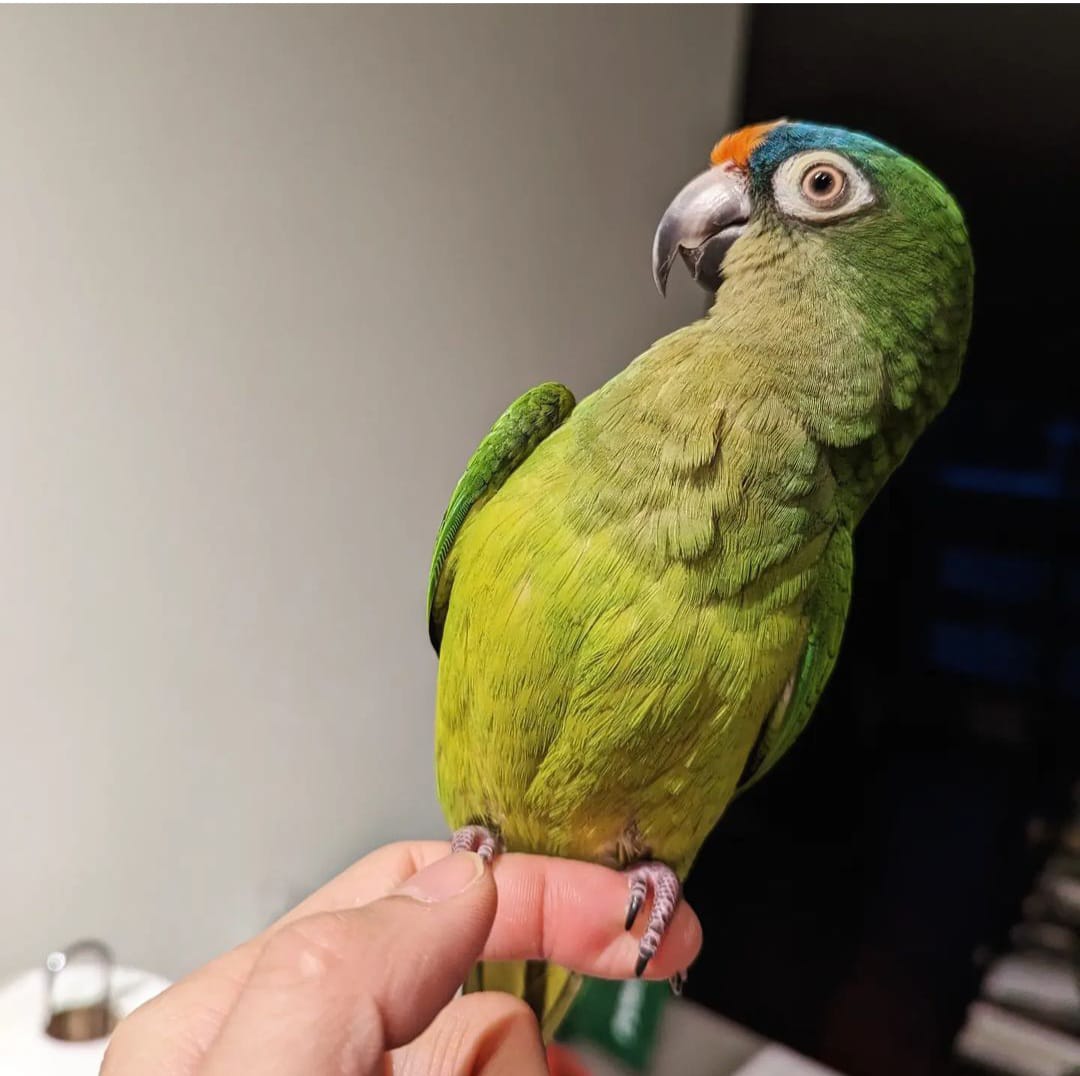This little bird, the Half-Moon Conure, is aware, active, and acts on its own. They’ll bob their heads and even open their eyes wider when they’re excited, happy to see you, or just want to show off.
Even though they can be loud, the Half-Moon Conure’s call is not as loud. People think that this type of Aratinga is one of the quieter ones. They like imitating different sounds, and some of them, like “Lucky,” can even talk a lot.
The Half-Moon Conure has a blue front cap and a thin orange band across the front that goes down to the lores. They are a bit bigger than the Petz’ Conure but look a lot like the other orange-fronted Conures. The Half moon conure also have a brown spot on each side of the base of the lower jaw. They look a lot like the peach-fronted conure, too, but their beaks are horn-colored and shaped like macaws’.
Half-moon conures need a lot of humans, exercise, and mental stimulation, just like most birds do. But the right person can make a great pet for them.
The half-moon conure is a loud South American bird that is often kept as a pet. People say they’re friendly and easy to train, but they have big attitudes.
Care and feeding Half Moon Conures
You can easily house a Half-Moon Conure in a smaller cage, such as a cockatiel cage, because they are not as disruptive as other conures. Except when the bird needs to go outside for playtime or exercise, a spacious cage is ideal.
While many orange-fronted conures consume figs, nuts, seeds, berries, and flowers in their natural habitat, the half-moon conure is known to primarily consume fruits—to the point where its plumage is frequently reported to be sticky. When kept in captivity, these birds will consume a varied fruit diet in addition to avian pelleted food. Compared to other conures, they take longer to become clean. About once every seven days, give them a bath, or, if they’re not into that, spray them down with warm water from a spray bottle or the sink.
Personality
People love Half Moon Conures because they are friendly, fun, and loving. They like to be around other birds and get lots of care from their owners. It is also said that they are smart and can learn tricks and imitate sounds. Other things you should know about Half Moon Conures are:
– Curiosity: They are always eager to look around and learn more about their surroundings.
– Active: They like to play and run around, and they need lots of toys and activities to keep them busy.
– Loyal: They feel very close to their owners and form strong bonds with them.
– Noisy: These birds can talk to each other by making a lot of different sounds.
We should always keep in mind that each bird is different and may have its own personality. Overall, though, Half Moon Conures are known for being friendly and fun, which makes them a popular pet bird.
Breeding
In their native habitat, these birds build their nests in termite mounds by creating a long, climbing entrance that abruptly turns into a hole in the mound’s center. While it is rare, termites have been seen to utilize tree cavities as a makeshift home when termite mounds are unavailable. Their preferred natural nesting site makes captive breeding a little more challenging than with other conures, but it is still being done effectively.
Female birds often have a thinner frontal band, though this can only be determined through DNA or surgical sexing of the birds.
Every other day, the hen lays an egg or two, and after about 30 days, they hatch. At the time of hatching, the mother takes charge of caring for the eggs and providing them with their first food. Eventually, the male will start feeding himself. After around six weeks, the baby birds “fledge” and leave the nest. The ideal dimensions for a nest box are 13 by 10 by 10 inches, with a 3.25-inch-diameter entrance hole.






Reviews
There are no reviews yet.